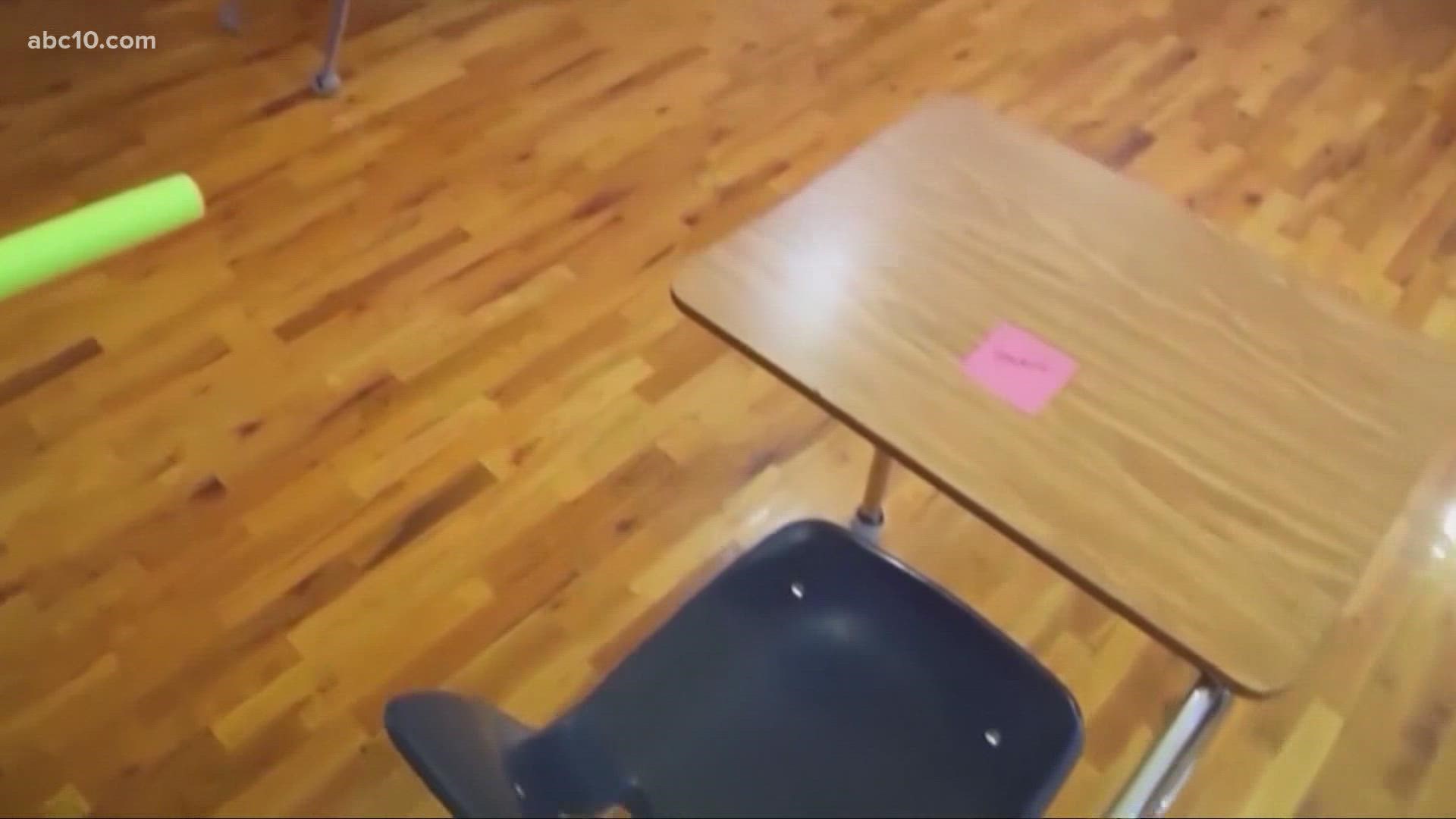SACRAMENTO, Calif. — Experts said layoffs are inevitable in schools across California as many students do not return to the classroom.
The state is spending close to $94 billion on education this year, but experts are warning school districts to start cutting budgets now to prepare for shortfalls. They say that kind of spending is not the standard, and it will go away.
To put it simply, schools are losing students, and schools get their money based on how many students they have.
Suzanne Speck is the executive vice president of School Services of California. The company provides financial management resources to school districts.
“During the period of the pandemic, schools have been funded based on their ADA back in 2019-20," Speck said. "So they've essentially been harmless.”
But the pandemic caused ADA (Average Daily Attendance) to drop, and that’s what the new budget will be based on.
"Their employee salaries, health and welfare benefits, the district's contribution to their pensions, for example, health and welfare costs," Speck added. "The rest is, you know, anything from instructional materials to keeping the lights on."
She said the districts will start with the low-hanging fruit, but added that "It'll be almost impossible to make reductions that don't result in people being laid off."
"All of those extra programs that are being built now to help with learning loss recovery, many of those will go away," she said.
The state hasn’t released attendance numbers this year, but in the first year of the pandemic, they reported losing 160,000 students.
"There's some difficult downsizing decisions and projections over downsizing that will come over the next year," said Public Policy of California Research Fellow Julien Lafortune.
To add to that issue, the state auditor released a new report Tuesday that found many school districts are not spending the money they’re getting from the federal government.
California received $24 billion from the federal government for education.
"Right now, there are about a fifth of the LEAs (Local Education Agencies) we identified that haven't spent, or they've spent less than 20%, of their federal funds," said Margarita Fernandez, with the State Auditor's Office. "Some of which are going to be reverting pretty soon."
If schools don’t use the money it goes back to the federal government. Fernandez predicts $160 million will be wasted.
“San Diego Unified School District (SDUSD) had spent none of a certain type of these funds," she said. "Actually almost none of both of the funds that are going to expire.”
As of June, SDUSD spent 70% of one type of funding, but 0% of the other. The school district told the State Auditor it was because “changes to its reopening timelines” caused delays.
An inquiry to the school district and a school board member was sent but it was not immediately returned Tuesday. However, on Wednesday, a spokesperson for San Diego Unified School District replied.
“I wanted to let you know that for FY 21/22, we have fully committed the remaining ESSER I funds and the GEER funds,” SDUSD Director of Communications Maureen Magee said. “It will all be spent, and no reporting deadlines have been missed.”
Margarita Fernandez said the State Department of Education is supposed to be monitoring how the 1,500 Local Education Agencies are using the federal money, but they’re only keeping an eye on 15 of them. That’s less than 1%.
Also, the $160 million is only the first round of federal money, the least amount, she’s predicting the schools will lose.
(Editor's Note: This story has been updated with a response from SDUSD.)
WATCH ALSO:



















